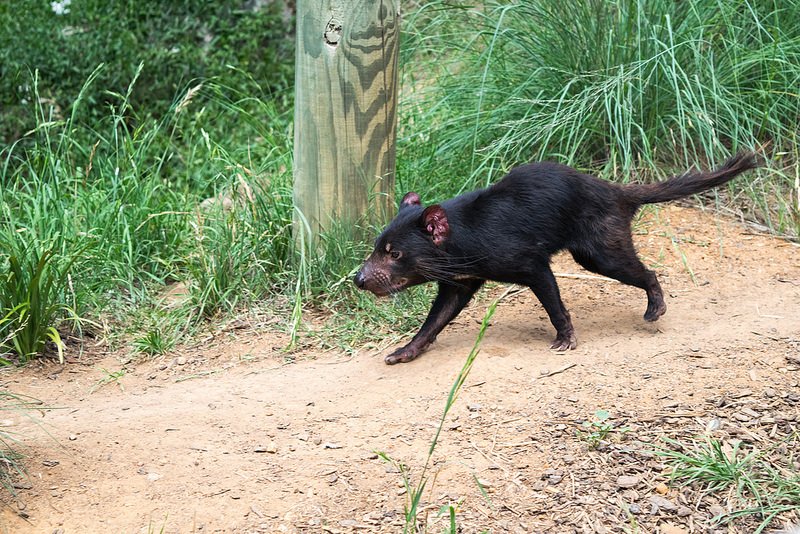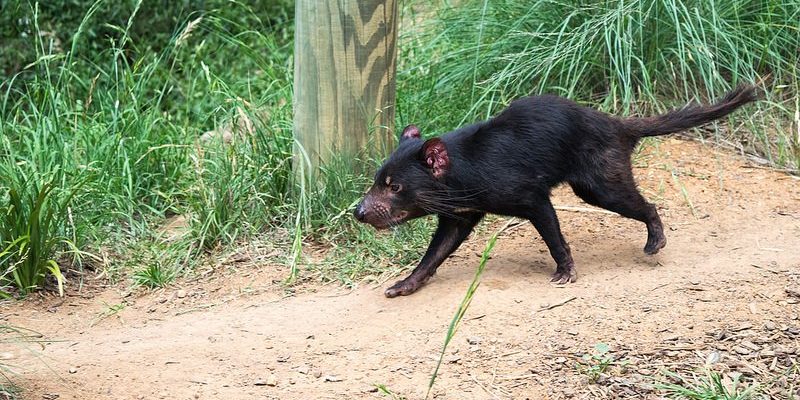
So, what exactly is the Tasmanian devil, and why should we care about its role in the ecosystem? They are the largest carnivorous marsupials in the world, known for their black fur and, let’s just say, *interesting* vocalizations. More than just a unique meme, these animals are pivotal in their habitat, influencing everything from prey populations to forest health. Let’s dig deeper into their life, habits, and, most importantly, their vital contributions to their ecosystem.
What Is the Tasmanian Devil?
The Tasmanian devil is a fascinating creature that belongs to the carnivorous marsupial family, which means they’re more closely related to kangaroos than you might think. About the size of a small dog, they typically weigh between 9 and 26 pounds. With their strong jaws and sharp teeth, they’re equipped for tearing through meat, making them skilled scavengers and hunters. Honestly, if you ever get a chance to see one, you’ll notice their scruffy fur, stocky build, and those unforgettable, eerie growls that sound almost like a horror movie!
These devils are nocturnal, meaning they prefer to hunt and scavenge under the cover of night. Their excellent sense of smell helps them locate carrion (that’s just a fancy word for dead animals) from miles away. You might be wondering why they’re so important in Tasmania and how they fit into the big picture of their ecosystem.
The Tasmanian Devil’s Diet and Feeding Habits
Let’s talk food! Tasmanian devils are opportunistic feeders, which means they eat whatever is available. They primarily feast on carrion, but they’re not picky. If they can catch live prey, they’ll go after rabbits, birds, and even insects when the opportunity arises. Imagine a furry garbage disposal zipping through the bush, ensuring that no dead animals go uneaten. That’s the Tasmanian devil for you!
Here’s the thing: their scavenging habits are crucial for the environment. By consuming dead animals, they help recycle nutrients back into the soil. This process prevents the spread of disease that could occur if carcasses were left to rot. Plus, their feeding helps control prey populations. If a species, like rabbits, becomes too abundant, the lack of natural predators can lead to overgrazing and habitat destruction.
Impact on Biodiversity
Biodiversity is a fancy term for the variety of life in a specific area. The Tasmanian devil helps maintain that balance. By keeping prey populations in check, they ensure no single species dominates the ecosystem. This balance is essential for a healthy forest and all the plants and animals that call it home.
Not only do they control populations, but Tasmanian devils also contribute to the diversity of scavengers. When they finish a meal, other animals, like birds and smaller mammals, take advantage of the leftovers. This creates a diverse community of species that rely on each other for survival, fostering a vibrant and resilient ecosystem.
Social Structure and Behavior
You might think of devils as solitary creatures, but they can also be quite social. While they often hunt alone, they come together to feed on larger carcasses. In these situations, they establish a hierarchy, with the strongest individuals getting first pick. They communicate through a range of vocalizations, from growls to screams, which might sound a bit unsettling but are actually quite fascinating.
Their social interactions can play a role in dispersing seeds, too. As they move around and, uh, relieve themselves, they help spread plant seeds throughout their territory. This movement contributes to forest regeneration, ensuring that new life can thrive in the ecosystem.
Threats to the Tasmanian Devil
Despite their resilient nature, Tasmanian devils face significant threats. One of the most concerning issues is a transmissible cancer called Devil Facial Tumor Disease (DFTD). This disease has decimated populations, pushing these unique creatures to the brink of extinction.
Additionally, habitat destruction from agriculture, urban development, and climate change poses a serious threat to their survival. As their habitats shrink, they have less room to roam and hunt, which only adds to their struggles. Protecting the Tasmanian devil isn’t just about saving one animal; it’s about safeguarding an entire ecosystem.
Conservation Efforts
There’s hope on the horizon! Various conservation programs are working tirelessly to save the Tasmanian devil. Captive breeding programs aim to increase their numbers and introduce them back into the wild. These efforts are crucial because they help ensure genetic diversity, which is vital for the population’s long-term health.
In addition to breeding programs, habitat restoration initiatives are underway to create safer environments for them. By planting native flora and establishing wildlife corridors, conservationists work to ensure that the Tasmanian devil can thrive in its natural home once again.
The Future of the Tasmanian Devil
The future of the Tasmanian devil hangs in the balance. With ongoing conservation efforts and increased awareness, there’s a chance for these remarkable creatures to bounce back. Protecting them not only preserves an iconic species but also the entire ecosystem they support.
As we take steps to understand and cherish these fascinating animals, we’re also taking steps toward a healthier planet—one where every creature, big or small, plays a part.
In conclusion, the Tasmanian devil is more than just a quirky symbol of Tasmania; it’s a key player in the ecosystem. By managing prey populations and contributing to biodiversity, these unique marsupials ensure the health of their environment. Let’s celebrate and protect the Tasmanian devil, so future generations can enjoy the wonders of the wild.

